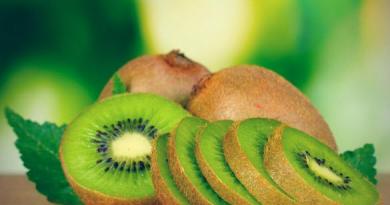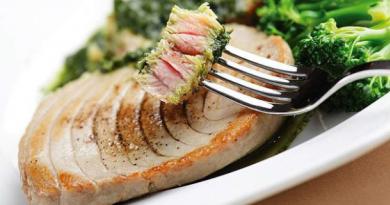Botanical name: Peach or common peach (Persica vulgaris), or peach tree (Prunus persica). Belongs to the genus Plum, family Pink.
Homeland of peach: China.
Lighting: photophilous.
The soil: Suitable for all soil types as long as there is good drainage.
Watering: moderate.
Maximum tree height: 8 m
Average life expectancy: 20-30 years old.
Landing: seeds, grafting.
This is a deciduous fruit tree, reaching up to 8 m in height. The bark of the trunk and old branches is scaly, reddish-brown. Old branches are powerful, drooping, rough, young ones are thin, smooth. The buds are located 2 in the axils of the leaves. Small spikes form on the trunk and bark of wild species.
The leaves are long, narrowed towards the base, lanceolate, alternate, serrated along the edge, up to 18 cm long, glabrous, shiny. The leaf plate is dark green above, light below, sometimes with slight pubescence in places of veins.
What do peach branches and flowers look like?
Peach branches are open, forming a wide spreading crown with a diameter of about 6 m. Peach flowers are single or paired, 2.5-3 cm in diameter, have a goblet shape, consist of 5 petals of red, pink and white shades. Ornamental varieties can be bright red, striped, terry. They bloom at the same time as the leaves or before them in early or mid-spring.
Peach flowers are shown in the photo below:
The duration of flowering is 10-12 days, with strong heat or drought - 2-3 days.

The fruit is a rounded, flattened, flattened-rounded, semicircular, oval, elongated-oval or ovoid drupe with a thin skin covered with fluff, 3-10 cm in diameter. It has a pronounced ventral seam and a depression at the point of attachment of the stem.
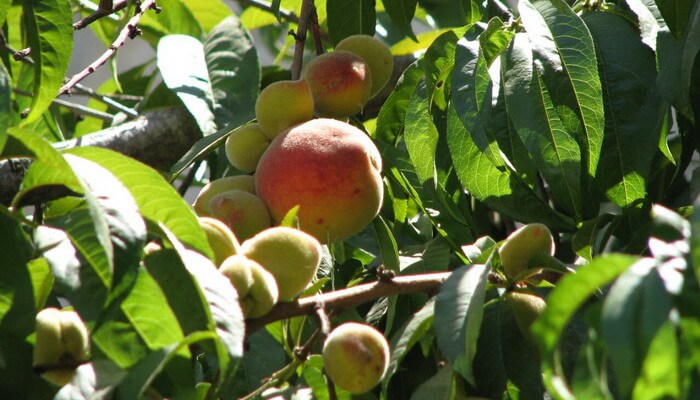
The color of the peach (photo above) varies depending on the variety from greenish-white to yellow-orange. The pulp is juicy, fragrant, sweet or sweet-sour taste. Its shade also depends on the variety, it can be white, yellow, orange, reddish. Inside contains a brown large, hard, furrowed, oval bone with a pointed apex. The stone makes up about 6% of the weight of the fetus. It is easily separated from the pulp, contains a bitter, sometimes sweet seed with the smell of almonds. The fruits ripen from July to September, depending on the variety. According to their weight, they are divided into small - weighing 60-90 g, medium - 91-150 g, large - 151-190 g, very large - 191-200 g.
According to its description (size, shape of leaves and flowers), the peach is close to the almond, and differs from it only in fruits and flowering time. Blooming peach resembles steppe almonds and looks very impressive during this period.
This culture is self-pollinating, therefore it has a high percentage of useful ovaries (20-60% of the total number of flowers).
Peach fruits and their photos
Unlike other fruit crops, the peach tree brings its first harvest 3-4 years after planting. Such precocity is facilitated by the formation of numerous generative buds on annual well-developed shoots. A warm climate, an abundance of sunlight and a sufficient amount of moisture favorably affect the formation of lateral shoots of the second and third order. The full formation of the tree occurs at 2-3 years of age, in subsequent years it begins to bear fruit. Gives good yields within 10-15 years. The yield depends on the size of the tree and general conditions. On average, one adult plant brings up to 50 kg of fruit.
On vigorous rootstocks, such as and, the garden peach reaches a height of 4.5 - 5 m, while the crown diameter is 4 m.
This culture is warm and photophilous, but can withstand short frosts. At a temperature of -20-25 ° C, leaf and flower buds, as well as the root system, are damaged. At a temperature of -30-32 ° C, the aerial part of the tree freezes completely. Sudden changes in temperature cause great harm to the plant. In order for the flower buds to begin to bloom, it needs an average daily temperature of 7-10 ° C.
The tree is not whimsical to soil conditions; it grows equally well on loamy, clay, sandy, acidic soils.
Photos of peach can be seen in our gallery:
 |
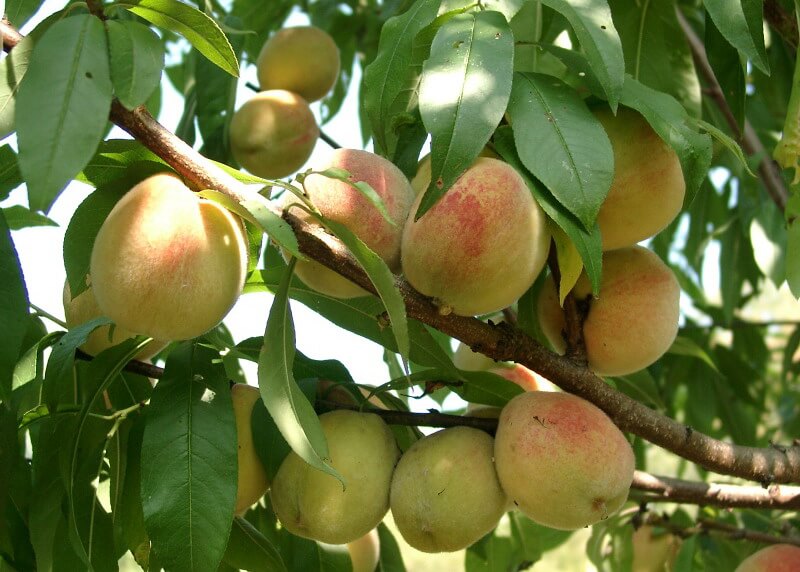 |
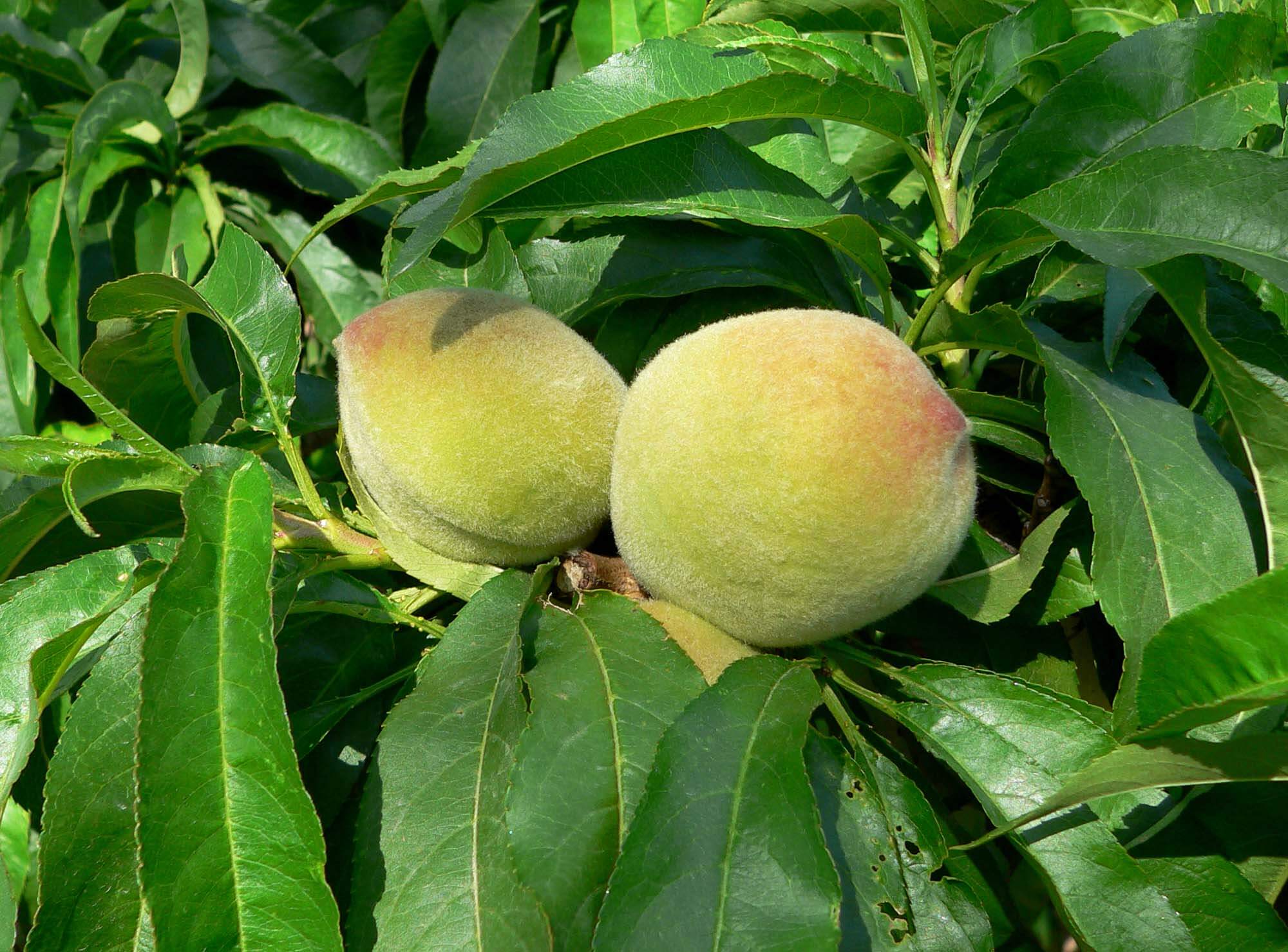 |
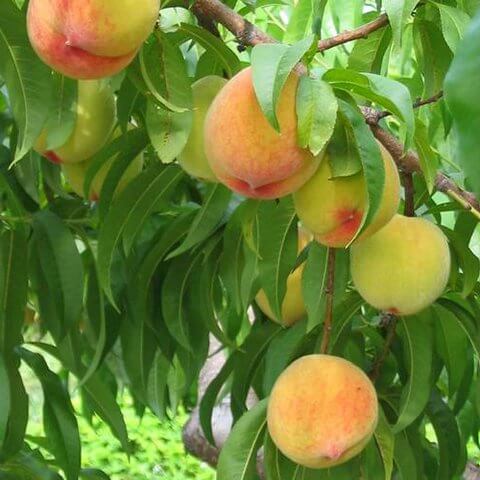 |
 |
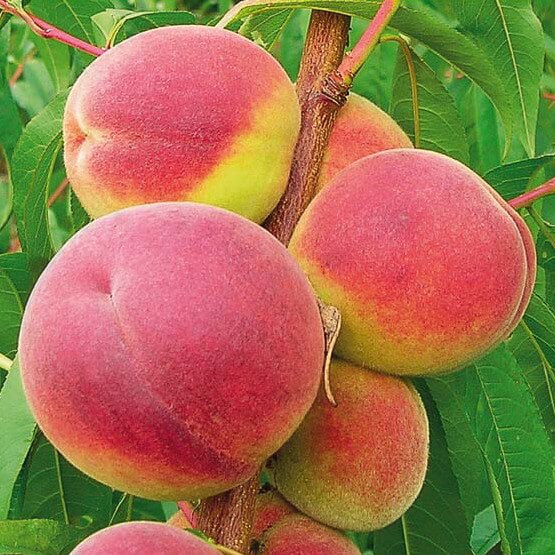 |
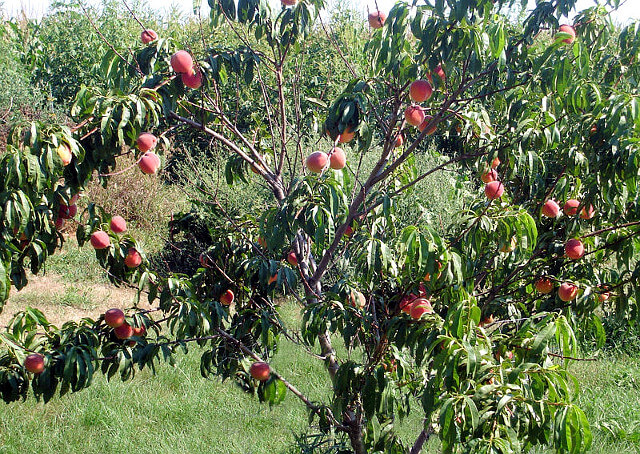 |
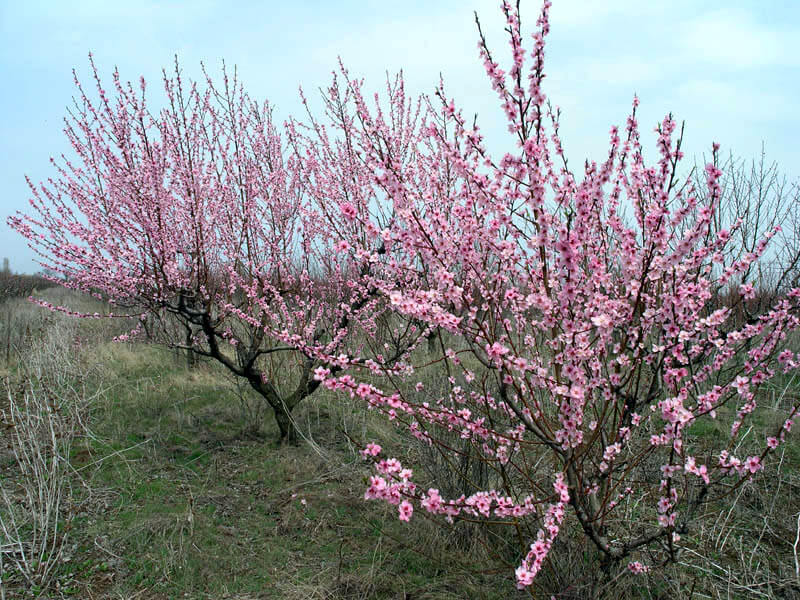 |
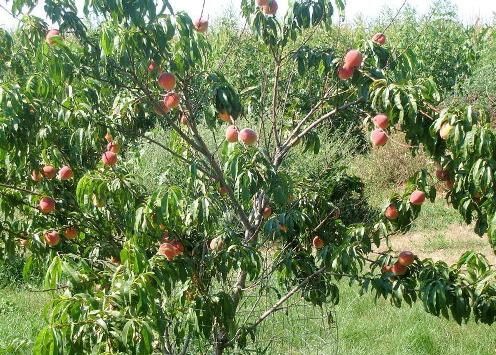 |
Where does the peach tree grow?
Contrary to its name, this plant does not come from Persia, but from China, where this culture was known long before it came to Europe. Countries where peaches grow have a warm climate. In the wild, it is found in Northern and Central China, India, Afghanistan. Cultivated in Central Asia, the Caucasus, Ukraine, Moldova.
In nature, peach trees grow side by side, forming a dense row that does not let in light.
The peach fruit is 80-90% water, sugar, pectin, carotene, vitamins, organic acids. The seeds contain fatty oils, essential and bitter almond oil. This fruit is rich in vitamin C, which makes it a valuable tool for the prevention of colds. The pulp contains a large amount of fiber, which improves digestion.
The taste of the fruit depends on the variety or species. The pulp can fit snugly to the bone, or easily separate from it. It can be soft and juicy, or denser and medium juicy.
The peach is a fruit that is eaten fresh and processed. Widely used in cooking and confectionery. A valuable oil is obtained from the seeds, which is used for medicinal and cosmetic purposes.
The color of a ripe peach in the photo
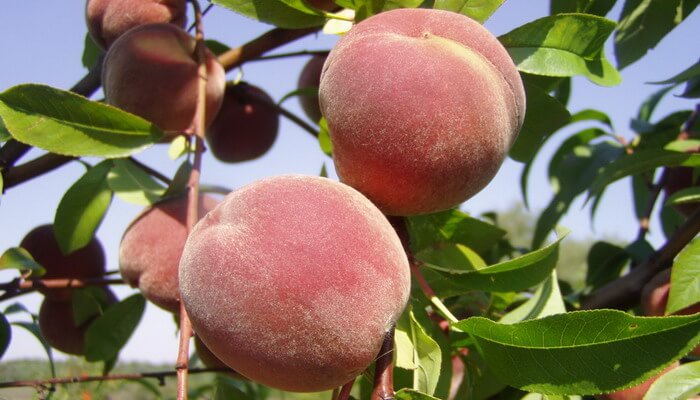
The color of ripe peaches is yellow-pink, the skin of the ripened fruit becomes soft and velvety to the touch. Harvested early fruits quickly deteriorate, wrinkle, lose their taste, and overripe quickly rot. For transportation and preservation, unripe hard peaches with a greenish skin are removed, 5-7 days earlier than their ripening.
Is a peach a fruit or a berry?
Not everyone knows whether a peach is a berry or a fruit. The fruit of this plant is rather related to fruits, since fruits are juicy fruits of shrubs and trees, formed from the ovary of flowers and containing one or more seeds inside. The berry, from the point of view of botany, is a small multi-seeded fruit of shrubs, semi-shrubs and herbaceous plants.
In China, the tree symbolizes longevity and immortality. Fruit is often included in the diet here, or is used instead of dessert. The peach flower is associated with eternal youth, spring, marriage, purity, purity. The Chinese god of longevity, Shu Lao, is depicted holding the fruit of this plant in his hands, or being inside it. The peach branch is used to decorate buildings during the Chinese New Year. In Japan, the fruit is a symbol of protection from harm.
The history of the peach tree originates in China, where this plant was known about 3,000 years ago. The fruits of this tree were considered among the best, and stood on a par with apricots, chestnuts, plums, medlar. In ancient China, peaches were served at the table of emperors. Gradually, the plant spread to Persia, and soon, thanks to the campaigns of Alexander the Great, it came to Ancient Greece, where it was called the "Persian apple". A few centuries later, Europeans began to cultivate it. In the 17-18 century. France became the leading country in the cultivation of this crop. This is where peaches and nectarines got their first names. In Russia, they began to be grown in the 16th century, but only in the southern regions.
Today, peach ranks third in Europe in terms of planted area after apples and pears. In our country, it is less popular compared to such fruit crops as apple, pear, plum, cherry plum, apricot.
For thousands of years, many legends, myths and superstitions have been associated with this plant. In ancient times, in the East, water was used to brew tea, which was glass from the petals of a peach flower after the spring snow melted. This water was considered the cleanest and healthiest.
In the Middle Ages, the French and the British began to obtain oil from peach seeds, which was used in medicine and cosmetology. They also made liqueurs.
When choosing this fruit in the store, you need to know what a good quality ripe peach looks like. Many people think that large fruits are tastier and juicier, but this opinion is not true with respect to peach, because the larger it is, the tougher it is. In order to determine the maturity of a peach, you should lightly squeeze it in the palm of your hand, while it should spring and emit a pleasant aroma. It is worth paying attention to the color of the fruit. The ripe fruit has a bright yellow or pale yellow surface with small areas of red or orange. The sweetest are the fruits with white and pink flesh. Yellow flesh is more fragrant. Green peaches are unripe, and although they are able to ripen once removed from the branch, they will not taste as sweet as when ripe on the tree.
You can also buy slightly bruised fruit, which is usually sweeter and juicier, if it does not have dark spots that indicate spoilage.
One of the surest signs of good taste is the delicate aroma of fruit.
Unripe fruits are stored in paper bags on the windowsill for 3 days. It is not recommended to keep them in a cool place and under direct sunlight. The softness and pleasant aroma of the peach will tell about the ripening of the peach. Ripe fruit is stored in the refrigerator for 5-7 days.
Photo gallery: peach tree (click on the picture to enlarge):
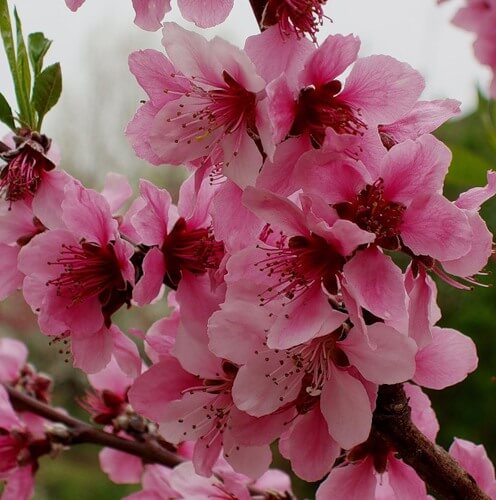 |
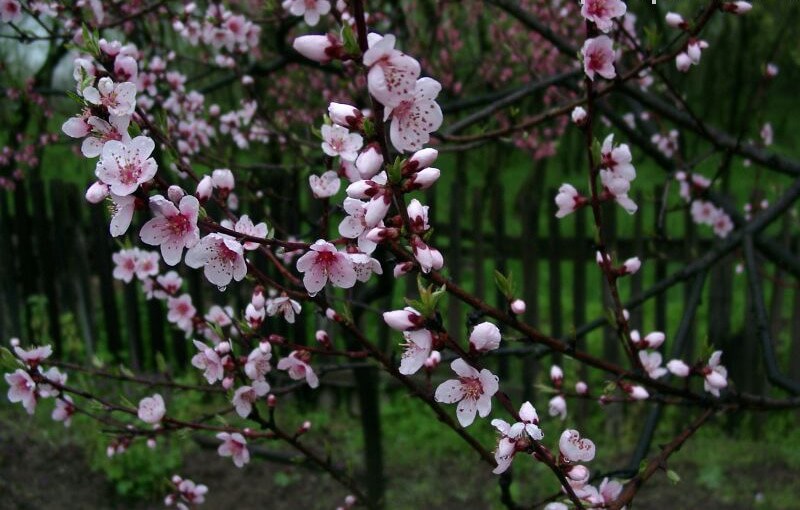 |
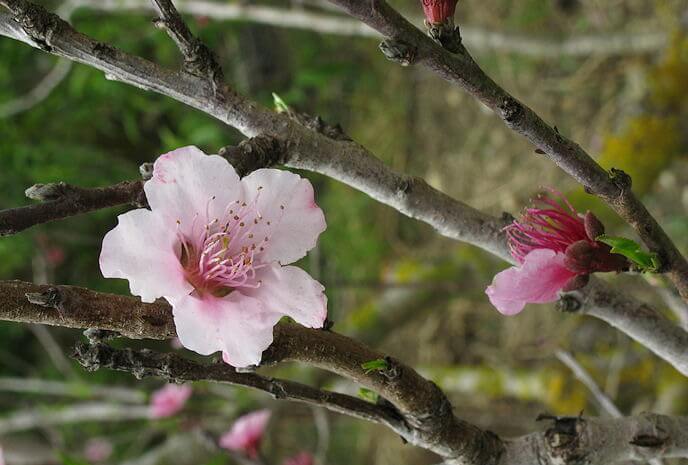 |
 |
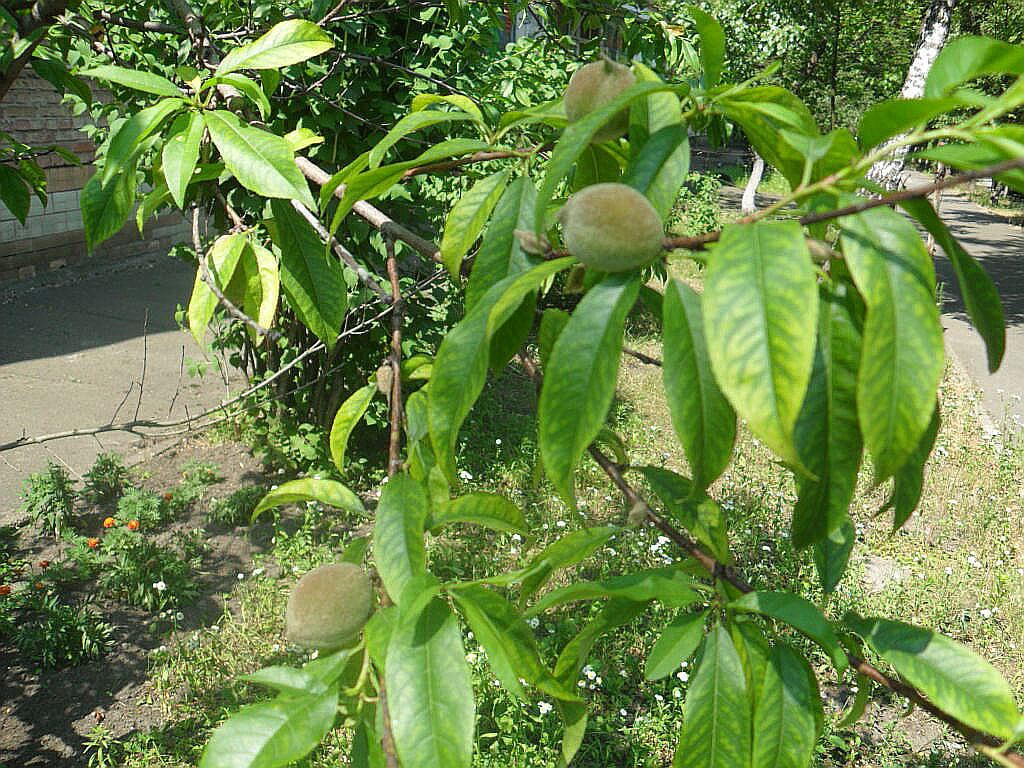 |
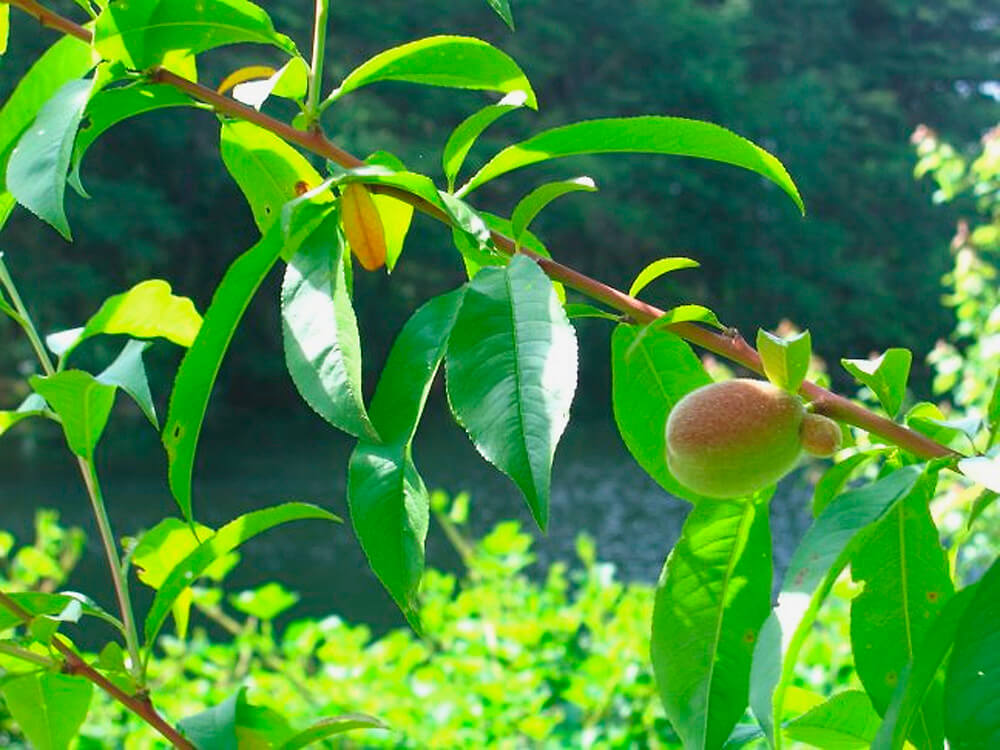 |
 |
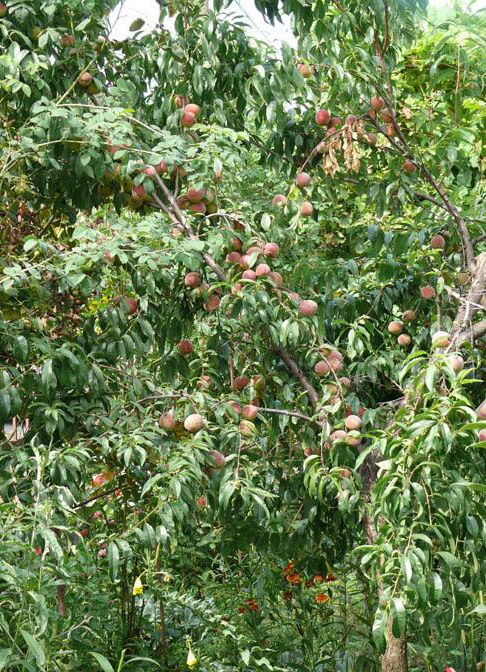 |


